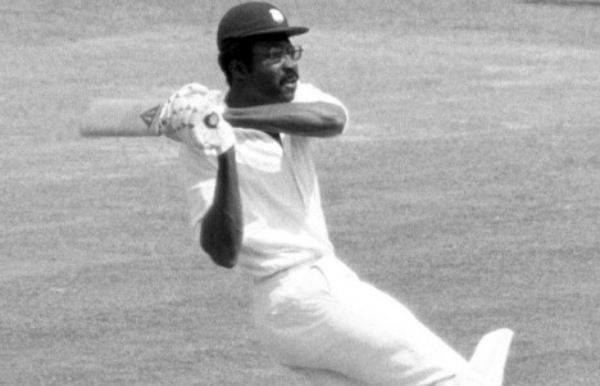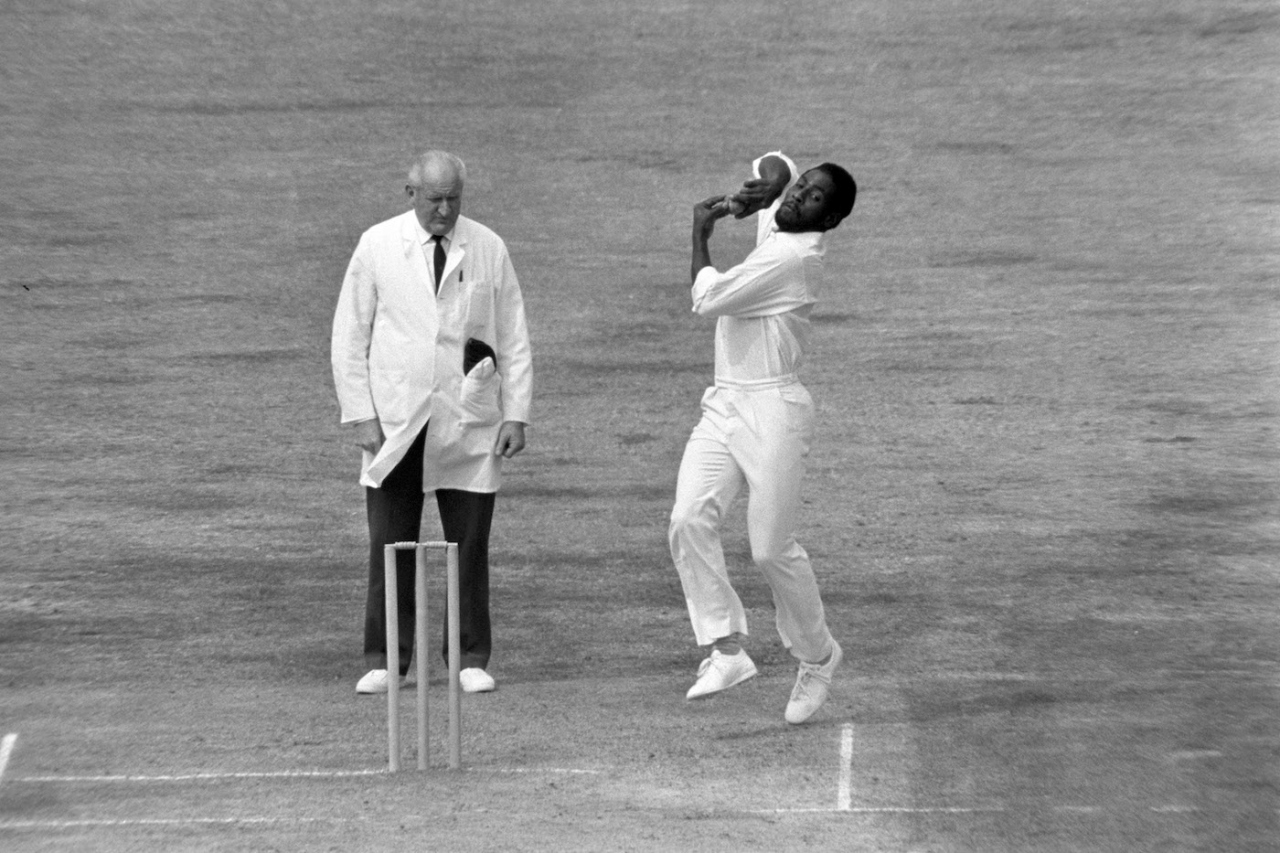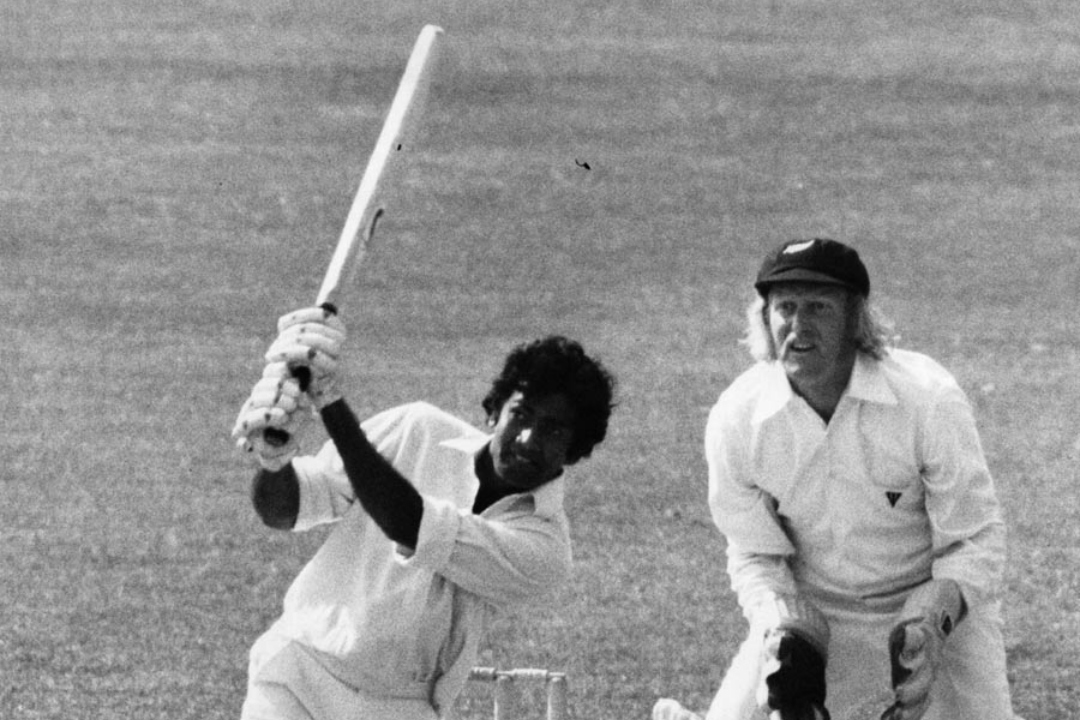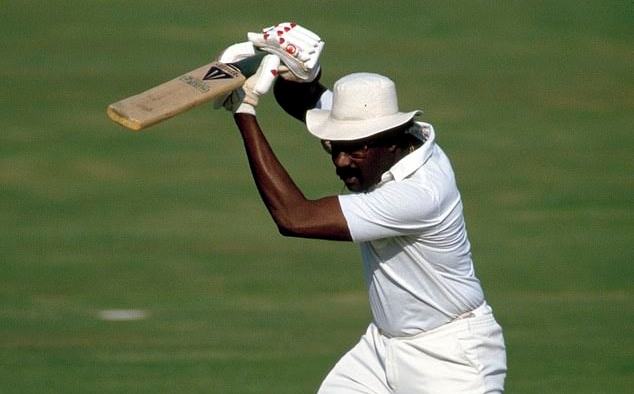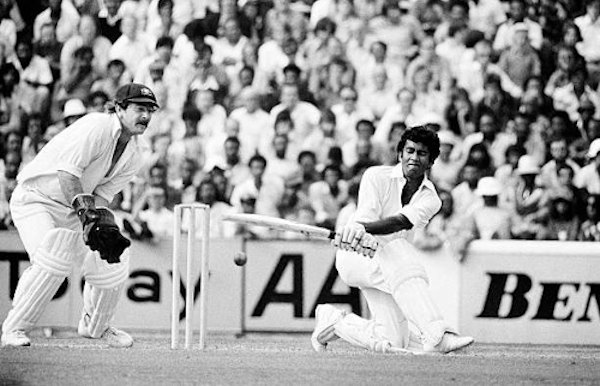Born 86 years ago today on 28 July 1936, Garfield St Aubrun Sobers became simply, as Sparrow sang, “the greatest cricketer on Earth or Mars”.
Hyperbole? Calypsonians, we know, are so prone. Still, it isn’t easy to dismiss the claim made by the Calypso King of the World on behalf of this West Indies cricketing legend. I, for one, accept it without question—at least, for the moment.

ICC also named the trophy for its Player of the Year, the Sir Garfield Sobers Trophy.
In “Marsican”, Kitchener, another calypso great, tells us how many steelpans the Martians have. But until we have reliable data on the cricketing situation on the Red Planet, I shall hold fast to my belief.
Sir Garry was not quite 18 when he first represented the West Indies in March 1954. Blessed with extraordinary cricketing skill, the legendary Barbadian left-hander went on to post some remarkable numbers before calling time 20 years later. But in a career extending from the mid-50s to the mid-70s, he always defied the numbers, never allowing the numbers to define him.
Noise from some quarters contends that cricket is a batsman’s game. And, say those who readily agree, the greatest cricketer who ever lived is Australia’s Don Bradman.
“Batsman’s game, my foot!” say I. A final batting average fractionally short of 100 is fabulous precisely because there were bowlers and fieldsmen consistently trying to cramp the batsman’s style. To keep him from scoring a single run!
So is the great Australian batsman’s 99.94 batting average sufficient to overshadow the multiple achievements of the Barbadian genius with the magnificent all-round game?
My answer? Not by a long shot.
In the decade preceding Sobers’ retirement in 1974, his name was often the first to appear on the West Indies selectors’ starting XI. No surprise there.

(via Sportskeeda)
Once ‘Sobers, G S’ was listed, they knew, the team already had four players: (1) A top-order, top drawer batsman. (2) A left-arm orthodox spinner. (3) A chinaman/googly specialist and (4) A left-arm new ball bowler.
Add, for good measure, a fieldsman with a remarkable record, close to the wicket or elsewhere. It has been suggested, perhaps even calculated, that the odds of a catch that came Sobers’ way being grabbed rather than grassed exceeded 95/1.
Exceptional batsman, fine fast and slow bowler, outstanding fieldsman and a captain into the bargain. All-round excellence. By any definition, a cricketing—not just a batting!—phenomenon.
But, say some contemporary commentators, Sir Garry was inadequately described as an ‘all-rounder’. Desirous of seeing the non-performing Eoin Morgan retained at the helm of England’s white ball team, they offered an ultimately unconvincing argument. The ‘all-rounder’ tag, they said, completely ignores the fact that captaincy is also a cricketing skill.

ESPNCricinfo’s Australian Jarrod Kimber, paying tribute to his 46-year-old compatriot Andrew Symonds after his death in a road accident in early 2022 boasted thus:
“Symonds was so far ahead of his time, he was a four-tool player: bat, bowl off-spin, bowl medium, and field.”
So let us indulge them. Let us allow ourselves momentarily to be seduced into using the group’s new terminology. Symonds with four tools was far ahead of his time?
Have we not shown that Sobers, who ended his career more than two decades before Symonds began his, was a ‘six-tool player’? That’s without precedent in the annals of international cricket. With or without terminological recognition, the Barbados-born cricketer was indisputably without peer in his sport.

(Copyright Darren England/ Allsport)
A quick look at Sobers as fieldsman, shall we?
The 109 catches he held in his 20 active years long remained the top number among West Indians. Close to the wicket, he was a demon trawler, hauling in fish, big and small. As one commentator put it, he ‘often picked batsmen’s pockets at short-leg’.
On international cricket’s Most Catches list, Sobers still ranks number 31. But only four players—England’s Wally Hammond and Greg Chappell, Bob Simpson and part-time leg-spinner Steve Smith of Australia—have reached 109 in fewer matches.
And 50 years on from 1974, just three West Indians have overhauled him. They are Carl Hooper (115 in 102 Tests), Viv Richards (122 in 121) and Lara (164 in 131).

(Copyright Getty Images)
Bowling, I would argue, reduces one’s availability for catches. So it is not without relevance that Sobers also sent down some 2,000 deliveries more than Hooper, Richards and Lara combined.
And not without success. His 200-plus tally of wickets is better by some distance than the 146 for whom the West Indian threesome accounted.
If you add the Anglo-Australian quartet’s 219 scalps to the WI threesome’s haul, the grand total is exactly 365. See the mischievous twinkle in the muse’s eye?
The Most Catches records give us precise aggregate numbers. But we have to guess how many Sobers claimed in his preferred close-to-the-wicket positions and how many elsewhere.

(Copyright PA)
Similarly, there are no details available about how many wickets he took with his fast or slow stuff or his front-of-the-arm or back-of-the-arm style.
What is beyond dispute is that, when Sobers began his career against England in the Caribbean in 1954, he bowled only his left-arm orthodox stuff. By the time he left the international arena 20 years later, he had added two more left-arm styles and had claimed a total of 235 wickets.
We know too that, in Australia in 60/61, Worrell initially opted to complement Wes Hall’s new ball pace with his own left-arm medium-pace stuff. It was not until the second innings of the drawn Fourth Test that Sobers (2/87) was called upon to open the bowling.
In the second innings of the Fifth Test, he was again chosen to partner Hall, having registered figures of 44-7-120-5 in the first. Numbered among his victims were both openers, Bob Simpson and Colin McDonald, and Neil Harvey and Allan Davidson. But at the second time of asking, he reaped paltry 0/32 rewards.

However, growing steadily in stature as a fast bowler thereafter, by England ’63, he had announced himself as having attained world class in the genre!
The story is told of how Garry approached Sir Frank as they took the field against Ted Dexter’s England at Headingley in the Fourth Test. He felt, he said, he had detected a weakness in one of the openers’ technique which he could exploit to dismiss him. Since Brian Bolus was making his debut in that match, the would-be patsy was almost certainly his partner, Micky Stewart.
Worrell was not sold. Charlie Griffith partnered Hall and claimed 6/36 as England fell for 174. Sobers finished with 0/15 in his six overs.
In the second innings, the usual suspects again opened the bowling. But Sobers eventually cleaned up Stewart for a duck, then had number four Ken Barrington LBW and Bolus caught in the gully by Lance Gibbs. He bowled 32 overs, almost ten more than Hall and Griffith combined, and finished with figures of 3/90.

In the first innings of the Fifth Test, Sobers claimed 2/44. His victims? Both openers, Bolus and John Edrich.
In the second innings, still not given the new ball, he sent down 33 of WI’s 81 overs. His 3/77 included the scalps of Dexter and Brian Close. And for good measure, Bolus, caught by Gibbs in the gully for a second time!
Still, despite his three different bowling styles, never once in 93 Tests has Garry Sobers finished with ten wickets. And he has only bagged five in an innings six times. Against England at Leeds in 1966, his innings analyses read 5/41 and 3/39. Against Australia in Brisbane two years later, he captured 6/73, including the scalps of Ian Redpath, Ian Chappell and Keith Stackpole.
So if we remember the name fondly, it isn’t so much that, despite his undisputed talent, he worked magic with the ball. À la Sonny Ramadhin and Alf Valentine in England in 1950, for example. Or à la Michael Holding at the Kennington Oval in 1976 or Curtly Ambrose versus Australia in Perth in 1992 or versus England at the Queen’s Park Oval in 1994.

To be fair, none of that quartet ever managed an all-round performance like Sobers in the earlier mentioned 1966 match against England at Leeds. There, he had match figures of 8/80 and contributed 174 in the West Indies’ only innings.
The truth is that, far more often, when Sir Garry raised his team above itself on the field, it was with bat in hand. He also memorably lifted a handful of youngsters up high within the boundary. And beyond it, thousands up to Cloud Nine.
And so, on behalf of all the beneficiaries over the years, we feel compelled to offer Sir Garry best wishes on this generally uncelebrated occasion.
And to raise our voices heavenwards to ask that he be permitted to proceed inexorably once more into the nervous nineties.
And beyond. On to a(nother) richly deserved century.
Of years this time.
Editor’s Note: Click HERE to read read the Post-Script of Earl Best’s tribute to Sir Garry Sobers, as he looks at the perceived inadequacy in the recognition of the great cricketer by the regional cricket body.
|
Wired868 has provided readers with solid, independent journalism since 2012. If you appreciate our work, please contribute to our efforts. Support Independent Journalism |
Earl Best taught cricket, French, football and Spanish at QRC for many years and has written consistently for the Tapia and the Trinidad and Tobago Review since the 1970’s.
He is also a former sports editor at the Trinidad Guardian and the Trinidad Express and is now a senior lecturer in Journalism at COSTAATT.
 Wired868 Wired868 for smart sport news and opinion
Wired868 Wired868 for smart sport news and opinion


